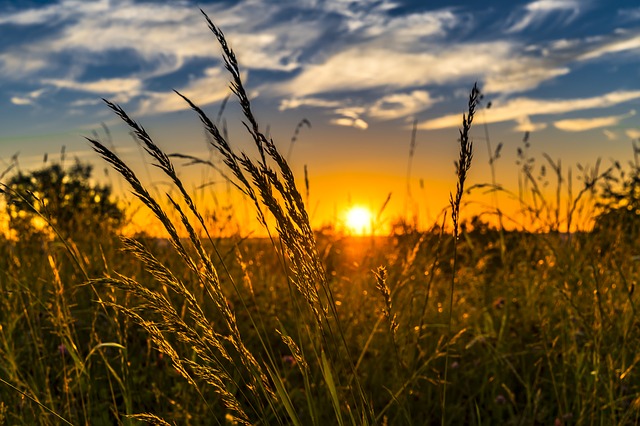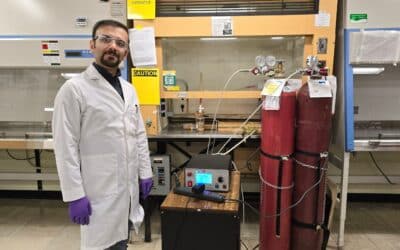What is the VUA and how exactly will it affect the crops you plant in your fields?
Editor’s note: This interview has been edited for length and clarity.
Todd Hyra, business manager Western Canada for SeCan, gives Alberta Seed Guide readers an in-depth look at the Variety Use Agreement (VUA) which will see farmers will pay a royalty to plant breeders for use of farm-saved seed. Hyra has worked for decades in the seed industry and helped develop the VUA. With a few crop varieties under the VUA banner out in fields as of the 2020 growing season, Hyra is working to gather feedback on the program and explain how it can help plant breeding in Canada.
ASG: How do you keep track of who is using farm-saved seed?
TH: We’re in the process of building a web-based system, an app that would allow an electronic agreement to be signed at the time of the original seed purchase. If the farmer likes the variety and chooses to use farm-saved seed, they would declare how many acres are used each year, or they could just repurchase certified seed.
ASG: So, it’s kind of a trust system almost?
TH: So, there is a contract, it’s beyond just pure trust… there would be some audits and some tracking to ensure compliance as well. As we’ve talked to farmers over the last couple of years, one of the pieces that they say is, ‘I’m fine signing a contract. But I want to make sure that if I’m paying, everybody’s paying.’ And so that’s part of the just ensuring that everybody’s paying their way along.
ASG: What are the different varieties involved in the pilot program?
TH: We had a soybean, a Round Up Ready soybean, that will be available for next year… Cantera had two wheat varieties… there was reasonable pickup of both those varieties and farmers seem to understand what was being done. And there were two pea varieties, forage pea varieties, that were added kind of late.
We’re still working with our plant breeding partners on identifying future varieties. The products must show value to farmers as this is what pushes plant breeders to deliver improvements. In the VUA farmers show support for crop breeding programs by buying specific varieties from that program.
ASG: Are there any similar programs to this in other countries?
TH: Yes, actually, there are a number of other countries — most developed countries have some system. The most similar to this would be what is done in the Netherlands, similar to what’s done in the UK, in terms of a farm save royalty… most countries around the world have something based on the seed being planted. The other version being something on the grain being harvested. Australia has an endpoint royalty where there’s a royalty taken at the time of harvest.
We looked at models from around the world as we were considering other options. And the VUA is flexible, so the rate can change depending on what the needs of the breeder or the product offers. It works across all regions of Canada, across all crops.
ASG: What do you feel is misunderstood about the VUA?
TH: There’s a few misconceptions. So one is, ‘Why do we need it? Things are looking okay right now. There are still some good products coming to market. Do we really need this?’ And my answer to that is, if you’ve been around as long as I have and can look at what we had and what we have and the trend lines, it’s startling.
A few different examples that I can give you are just the breeding positions within some of the public programs that have been cut over the years. So, just four or five years ago we had two barley breeders and two wheat breeders in Brandon, Manitoba. And now there’s one of each. So, breeding positions are being cut, testing facilities have been cut.
There’s a ton of other examples, but the erosion has been continuous over time. And we need to stop that and ensure that we maintain what we have and build back and attract new investment.
The next one is, ‘While I’ve already paid for these varieties, why are you charging me more?’ Because farmers pay levees, and they pay some but not all. And it’s important to consider this is just one piece of many pieces of pie that make up funding, in particular public breeding programs.
They’re funded by producer dollars, they’re funded by federal dollars, so pure public investment in those, as well as other industry contributions that support the programs. And then the royalty that would be captured from certified seed sales. This is sort of another piece that would help round out that overall contribution.
ASG: How will the VUA affect plant breeding in Canada and specifically in Alberta?
TH: I’ll give a couple of examples. In oats, for example, certified seed usage is about 15 per cent. So that means when a breeder sells the variety, they get a royalty on certified seed sales which would be about 15 per cent of the acres being planted of their variety. So, 85 per cent of the crop is being used without any royalty flow back to them.
And so, if it’s a public program, there are some other avenues. There’s public funds and some producer checkoff dollars that help support them. But if you’re a private breeder, it’s a very difficult position, even when you’ve got good products, to try and maintain flow and keep those products coming forward. And so, by having a small royalty on those that choose to farm save seed, it levels the playing field and ensures that breeders are being rewarded.
If we look at the some of the challenges going on within the public programs across Canada, and you can look provincially in Alberta. Some of the struggles to try and maintain that investment in the breeding that is being done by Alberta Agriculture and ensure that the agronomy support goes on. You can see the budget cuts that hit in 2019, 2020 that are really impacting those.
If you want to maintain breeding, you have to have dollars going in and you can’t rely alone on public dollars. So, we need alternate mechanisms that help support those programs.
ASG: What do you think the future of plant breeding in Canada is if the VUA doesn’t go through?
TH: Well, it’ll continue in some form, but to maintain competitiveness and to attract the brightest and best we need to invest. No doubt about it, farmers invest in their farms all the time. And this is just one of those pieces of investment.
And so, if we don’t, programs will continue, but will the competitiveness of the products coming out of those programs be as good as they could be? Will there be products from other parts of the world coming to Canada?
When we started talking about the VUA and the potential for some additional royalty flow back to breeders, it immediately sparked interest from breeders from around the world to look at Canada and start to make crosses for Canada. And so, without that, they’ll stop that investment, completely pack up and leave. They need to have a return.
ASG: Is there anything else you’d like to say?
TH: This is an important time for us. We’re learning. We want to understand the impact from a farm perspective. We want real life feedback and we want the system to be fair. So, it’s about developing a system that supports and encourages breeding. But there has to be reward in it for the farmer all the way. It’s not just a one-sided equation.
Editor’s note: The Seed Variety Use Agreement (SVUA) was recently renamed the Variety Use Agreement (VUA).





